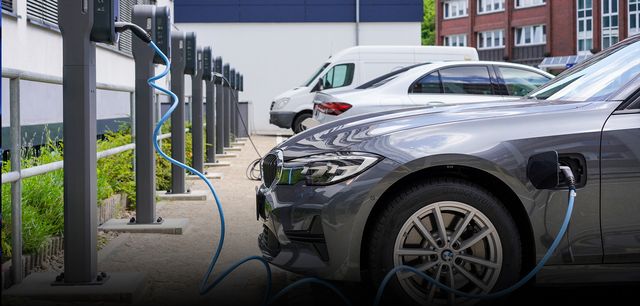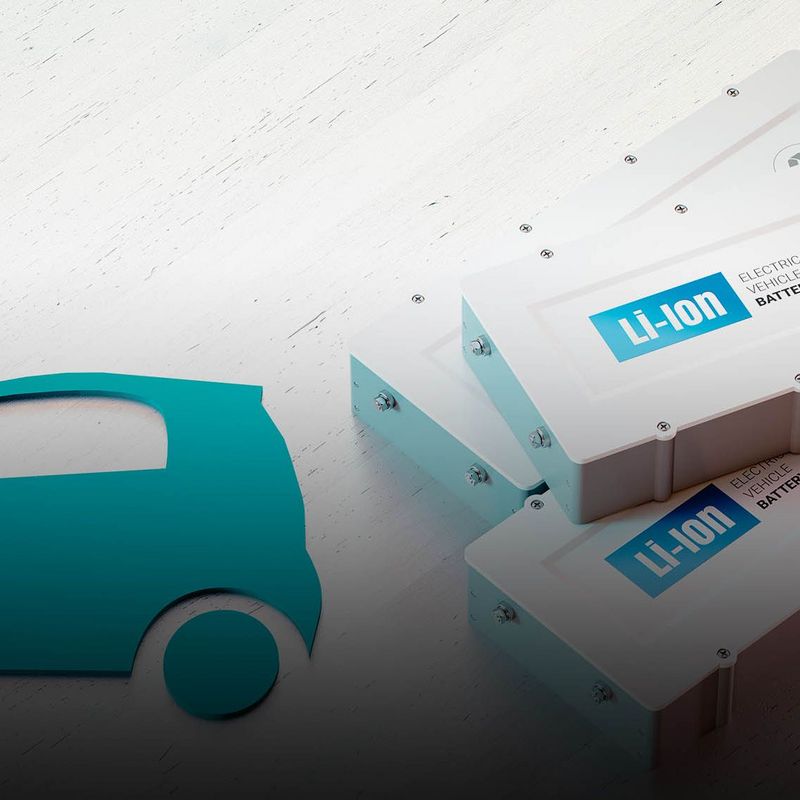29. July 2021
The number of registrations of electric vehicles is currently going through the roof – boosted by the increased subsidy premiums and an ever-growing selection of models. One in five new cars in 2021 was an electric car or a plug-in hybrid. As they grow in popularity, discussions about their safety continue to create a stir. In March, electric vehicles were temporarily banned from underground car parks in Kulmbach, Bavaria – due to an alleged increase in the associated fire risk. Roger Eggers from TÜV NORD explains exactly where things stand with the safety of electric vehicles.
#explore: Reports about burning electric cars are spooking a lot of people. Are electric vehicles really so very likely to go up in flames?
Roger Eggers: What the media say and what is actually true are miles apart on this issue. Every year, 15,000 cars catch fire in Germany. The vast majority of them have internal combustion engines. When electric cars aren’t involved, however, these fires are usually not worth reporting. But the fact is that petrol cars in particular, but diesels too, run a significantly higher risk of catching fire for technical and physical reasons: they run on a combustible liquid fuel that tends to evaporate and can explode. If, for example, petrol leaks out of a hole in a fuel line, fire is the inevitable consequence. Incidentally, the fire in Kulmbach is also thought to have been caused by a burning petrol engine.
What’s the story with the crash safety of electric vehicles?
To be approved for road use, electric vehicles must meet the same safety requirements as petrol, diesel or LPG-powered cars. In crash tests, they perform at least as well as, and sometimes even better than conventional vehicles. The manufacturers put a lot of effort into protecting the batteries from damage. The battery packs, which are usually housed in the underbody, are protected by extremely robust housings that will generally survive major impacts and accidents without any problems. Only in the case of very serious accidents in which the vehicle is also badly damaged can this kind of protective housing reach its limits and harm come to the battery. This is actually the only realistic scenario in which an electric car can catch fire. As with any other vehicle, there is of course a risk of a short circuit. But it’s a cable or some insulating material which may catch fire here, and certainly not the battery.
What makes a battery fire so problematic in the first place?
The lithium contained in the batteries is a highly reactive alkali metal. If it comes into contact with water due to damage to the battery housing, a chemical reaction with very high temperatures and flash flames will be triggered – this may be familiar to you from chemistry lessons at school. It’s almost impossible to fight a fire of this kind with conventional means like extinguishing foam. If you’re using water to put it out, you will need significantly larger quantities than you would with a petrol or diesel vehicle. What’s more, this chemical-physical reaction takes a relatively long time to play out. In other words, a damaged battery can catch fire again or at a later date. After a very serious accident, the entire vehicle must if possible be put in a container, completely covered with sand or water and placed under observation. It goes without saying that you can’t set up a container of this kind at the edge of a wood or in an enclosed space.
“The fire brigades have recognised the seriousness of the issue and equipped themselves accordingly and are training their staff to deal with burning electric cars.”
The number of registrations of electric cars has risen sharply since last year. Are fire brigades equipped to extinguish electric vehicle fires?
The fire brigades have recognised the seriousness of the issue and equipped themselves accordingly and are training their staff to deal with burning electric cars. I certainly wouldn’t go so far as to say that every volunteer fire brigade already has the technical kit it needs – but the big ones do, at least. So, we’re on the right track here.
How high is the risk that occupants or first responders will be caught up in a fire if an electric car gets involved in an accident?
This risk is virtually zero. As soon as a fault is registered in the system – for example, in the event of an accident – the car will immediately switch into the safer, voltage-free operating state. This means that the battery will automatically be disconnected from the other high-voltage components and cables so that there will no longer be any voltage there. This process is often linked to the deployment of the airbags. Even if an animal with exceptionally strong teeth should somehow manage to nibble on a cable and cause a short circuit, the intrinsically safe state will immediately be established and the current flow interrupted.
Can you easily charge an electric car from any power point?
Smart electric cars you can, absolutely, because they only draw as much electricity from the socket as the cable and the socket can handle. However, because an electric car charges very slowly from a 230-volt socket, this is really only an emergency solution in the event that you get stranded somewhere with neither a charging station nor a domestic charger.
What do you have to consider in terms of safety when installing a domestic charger?
The installation should be carried out by a specialist company. This is also a must if you want to get the 900-Euro government subsidy. The specialist company will also check in advance whether the existing cabling in the building is up to the job or a new cable will need to be laid. As a rule, domestic chargers have an output of up to 11 kilowatts (kW). If you want to install a 22-kW charger, you will need a correspondingly thicker cable as well as the permission of the local grid operator.
Can you charge safely even in the pouring rain?
Technically, this is no problem at all – even if the connections get damp or wet. After all, the car and the charging station talk to each other. And only when both systems recognise that everything is in order will the charging process start. Of course, charging in the rain is a real pain, as I know from my own experience as an electric car driver. Which is why I think a requirement should be included in the Charging Station Ordinance to the effect that the columns must be fundamentally redesigned to protect their users from bad weather.
What were your own reasons for switching to an electric car?
In actual fact, I still have car with an internal combustion engine – a vintage convertible from 1989. But this is more of a car for a Sunday trip out. In my everyday life, on the other hand, I’ve gone fully electric. For me, a variety of reasons came together: there was the ecological consideration; after all, no other system is as energy efficient as the electric motor. I was also simply curious about the new technology, and, finally, driving an electric car is loads of fun. It’s quiet and has brilliant acceleration, because, with an electric motor, virtually the full torque is available to you from the start. Of course, an electric car requires a little more planning – especially for longer journeys. But there are now some good apps, and you often also have integrated navigation systems that you can use to schedule charging stops at your destination or along the route.
These might interest you too:
About Roger Eggers
© TÜV NORD
Roger Eggers is the director of Technical Competence at TÜV NORD Mobilität.



